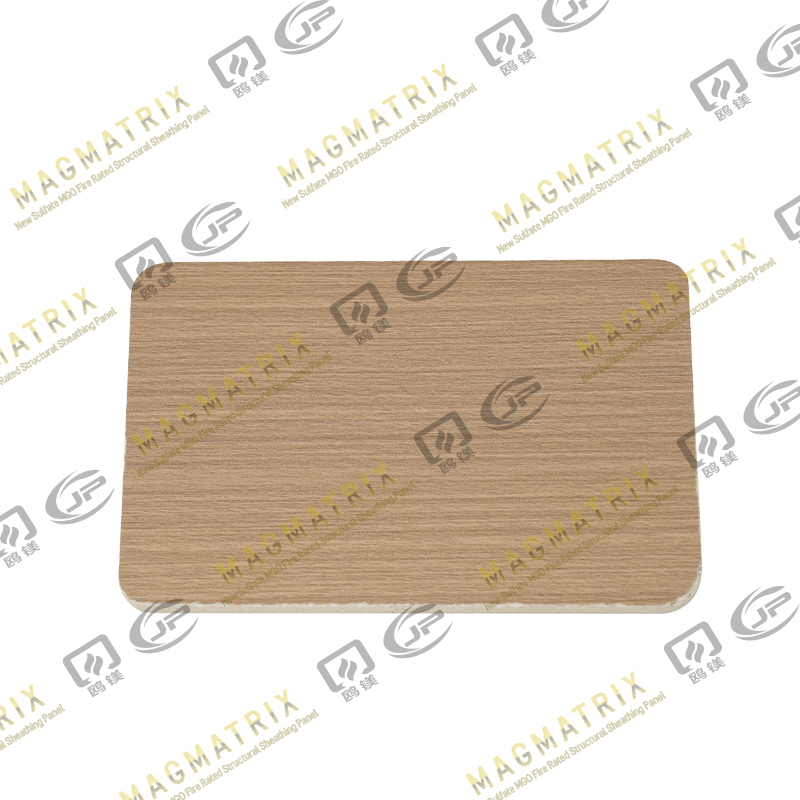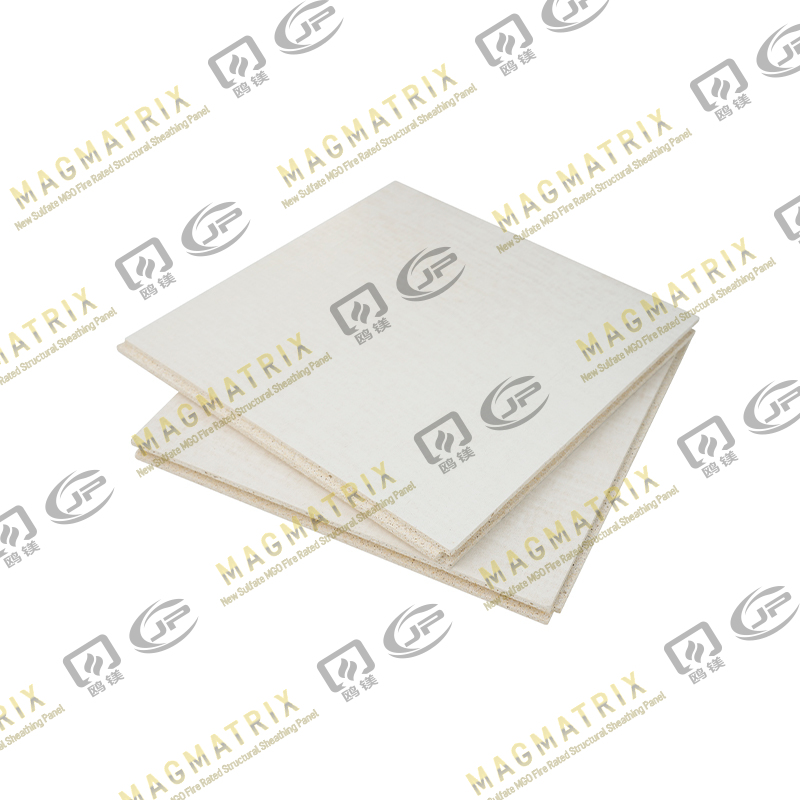
MgO wall boards can withstand temperatures up to 1200 degrees Celsius without melting or releasing harmful gasses. This makes them excellent building materials for areas prone to disasters. Traditional building materials often fail at the time disasters strike. This leaves structures vulnerable to fire, water damage, and structural collapse. But magnesium oxide boards provide superior protection during these critical moments and give both safety and peace of mind.
These remarkable boards contain natural, non-toxic materials that anyone can recycle. This supports environmentally responsible construction. The MgO board price shows its long-term value through lower maintenance costs and less frequent replacements compared to traditional drywall. Our research shows that environmental MgO wall board cuts down carbon dioxide emissions during production. This makes it an eco-friendly choice for sturdy construction. Most homeowners are amazed to learn about MgO board's composition - it mainly contains magnesium oxide and sulfate. These ingredients create a material that fights off pests, decay, moisture, mold, and mildew even in very humid environments.
This piece explores why MgO boards stay standing while other materials fail during natural disasters. We'll get into their impressive fire resistance, water resilience, and exceptional strength of over 5KJ/m2. These features help them handle physical stress during earthquakes or storms. On top of that, we'll share details about trusted MgO wall board suppliers and compare MgO board vs drywall costs. This information will help you make smart choices for your construction projects.
Why Natural Disasters Demand Better Building Materials
Natural disasters reveal how weak conventional building materials can be, and the results are often devastating. A newer study shows that a powerful 7.8 magnitude earthquake on the San Andreas fault could kill about 1,800 people and hurt another 50,000. Even new structures might fail at rates up to 1 in 10. Weather patterns keep changing and more people move to urban areas, which makes traditional building materials' weakness more obvious.
Common failure points in drywall, plywood, and OSB
Oriented strand board (OSB), one of the most used engineered wood panels since the mid-1980s, has several weak points during disasters. OSB's edges swell badly when they get wet, and the panel can lose its strength in two ways: fasteners become overdriven as panels expand, and the bond between wafers and resin breaks down. On top of that, its manufacturing turns some cellulose fibers into simple sugars that help mold grow faster when wet.
Plywood holds up better than OSB but still has big weaknesses. It soaks up moisture faster than OSB but usually returns closer to its original size after drying. All the same, bad wetting can permanently warp it, and you can see this even through roofing materials. Both materials will fail if they stay wet long enough - it's just a matter of time.
Chinese drywall caused big problems in about 100,000 U.S. homes by releasing sulfurous gasses that rusted wiring, hurt appliances, and made people sick. Regular drywall doesn't protect much against water or fire either.
How fire, water, and impact affect traditional materials
Fire damages conventional building materials in destructive ways. Wood burns easily, chars on the surface and loses much of its strength even when it's not directly burned. Wood might look fine outside but can have serious internal damage from extreme heat. The breakdown of building materials can release toxic compounds including polyaromatic hydrocarbons and polychlorinated dioxins at levels from 1.0 to >7.2 ng/m³ for PCDD/Fs and 6.4 to 470 mg/m³ for PAHs.
Water damage poses another big risk. OSB suffers the most because it takes longer to dry than plywood after getting soaked. Long-term moisture helps fungi spread, especially since most trees used in OSB (aspen, cottonwood, poplar) have little or no natural protection against decay. Different OSB panels can decay at very different rates even in similar wet conditions.
Traditional materials often break completely during earthquakes and high-impact events. Steel seems tough, but it can lose up to 50% of its strength in high temperatures, which makes it bend or buckle under a building's weight. Concrete and masonry resist high temperatures well but can suffer from spalling - trapped moisture expands and cracks the surface, which weakens the whole structure.
Construction professionals now turn to alternatives like MgO wall boards with good reason too. These boards handle fire, water, and impacts better than traditional materials. Environmental MgO wall board stays strong under extreme stress, which offers better protection and might cost less than drywall over the building's lifetime.
What Is MgO Board Made Of and Why It Matters
MgO wall boards show remarkable performance during disasters thanks to their unique composition. A closer look at these boards reveals why they work better than traditional building materials in extreme conditions.
Magnesium oxide and sulfate composition
These boards contain about 50-58% magnesium oxide as their main structural component that provides strength. Manufacturers combine this key ingredient with either magnesium sulfate (27-40%) or magnesium chloride (27-29%) that acts as a binding agent. The difference between these binding agents plays a crucial role in how the boards perform.
Quality MgO wall boards also contain:
· Perlite (3-4%) for lightweight properties
· Wood fiber or sawdust (5-6%) for flexibility
· Phosphate (0.1-0.3%) for stability
· Fiberglass mesh (4-6%) for structural reinforcement
This specific mixture creates boards with a density range of 650–1400 kg/m³, which varies based on their intended use. Manufacturers calcine magnesium at temperatures between 700°C and 1,400°C to control the MgO's reactivity level. They then mix this calcined MgO with magnesium chloride or sulfate solutions to create the final cement-like material.
Magnesium sulfate boards (MgSO4) stand out as the better option. These boards resist moisture absorption better than traditional MgO boards made with magnesium chloride. MgSO4 boards prevent the "weeping board" issue and stop metal fasteners from corroding - problems that often plague older chloride-based versions.
Non-toxic, chloride-free, and eco-safe formulation
Modern MgO wall boards offer great environmental benefits beyond their structural advantages. Premium boards don't contain volatile organic compounds (VOCs) or toxic ingredients. You won't find harmful substances like:
· Asbestos
· Formaldehyde
· Ammonia
· Crystalline silica
· Benzene
· Heavy metal salts
These boards create better indoor air quality because they don't release harmful gasses. People with allergies or asthma will find these environmental MgO wall boards a perfect choice.
Sulfate-based MgO boards represent a huge step forward from traditional chloride-based versions. Traditional MgO boards contain less than 8% chloride, but even this small amount can cause problems over time. Chloride-free boards eliminate these concerns completely.
Manufacturing these boards brings environmental benefits too. MgO production needs lower calcination temperatures than regular Portland cement, which saves energy. These boards also absorb carbon dioxide as they cure, making them even more environmentally friendly.
MgO boards might cost more than drywall upfront. All the same, they last longer and resist environmental damage better, which saves money through reduced maintenance and replacement costs. This value has led more MgO wall board suppliers to focus on disaster-resistant construction projects.
MgO boards' composition, especially those using magnesium sulfate, creates an adaptable building material that withstands natural disasters while staying environmentally responsible.
1. Fire Resistance: Withstanding Extreme Heat and Flames
MgO wall boards char instead of burning if they catch fire. They absorb heat energy and slow down flame spread. This makes them valuable in fire-prone areas and buildings that need better safety measures.
Non-combustible up to 1200°C
MgO boards resist heat remarkably well and stay structurally sound at temperatures that destroy regular materials. Lab tests show these boards keep their integrity at 800°C (1,472°F) and don't catch fire even at 1200°C (2,192°F). This happens because magnesium oxide has a high melting point.
Good quality MgO boards can handle temperatures over 750°C (1,382°F) for more than 30 minutes without changing color. This means they can resist fire for up to four hours in proper wall setups. Regular gypsum boards last nowhere near as long - usually less than an hour.
MgO wall boards give you vital extra time to evacuate during real fires by:
· Keeping their structure throughout the fire
· Charring instead of burning to slow fire spread
· Taking in lots of heat energy at high temperatures
Zero smoke and toxic gas emission
One of the biggest safety benefits of MgO boards is how they behave in fires. Regular materials release harmful substances, but MgO boards produce almost no smoke and zero toxic emissions in fires. This is important because smoke kills more people than burns in building fires.
Tests using ASTM D5116-10 standards prove MgO boards have no volatile organic compounds (VOCs), benzene, or other harmful airborne substances. High-quality MgO boards score 0/0 on the ASTM E84/UL 723 Flame Spread and Smoke Developed Index. This shows they're extremely safe during fires.
These boards have another safety feature - they can release up to 30 pounds of water vapor during fires. This moisture helps cool and contain flames, creating a built-in fire suppression system that improves their fire resistance.
ASTM E84 and EN 13501-1 compliance
Building materials need to meet strict international standards to be certified as fire-resistant. Top-quality MgO wall boards excel at these tests and earn the highest safety ratings.
Modern MgO boards get Class A1 fire ratings under EN 13501-1, Europe's strictest non-combustibility rating. They also pass ASTM E136 non-combustibility criteria, which tests materials in a vertical tube furnace at 750°C.
The International Building Code (IBC) needs non-combustible materials for Types I and II construction, especially for floors and roofs. MgO boards meet these requirements by passing:
· ASTM E84 testing with minimal flame spread
· ASTM E119 standards for fire-rated assemblies
· NFPA 285 compliance for wall assemblies
MgO boards can achieve independent 1-hour and 2-hour fire ratings in proper wall assemblies without extra materials. This makes them perfect for commercial and multifamily buildings that need protection in exterior walls, interior shared "party" walls, and roof/floor decks.
2. Water and Mold Resistance in Flood-Prone Areas
MgO wall boards keep their structural strength when wet, unlike traditional building materials that break down faster. This makes them a great choice for flood-prone areas where regular materials often fail.
No swelling or warping under high humidity
MgO boards stay dimensionally stable when exposed to moisture. These boards remain strong and intact after contact with water, unlike wood-based panels. Quality MgO boards soak up less than 10% moisture after two hours of full immersion. This matches gypsum boards but beats wood-based panels that soak up more than 20%.
These boards also dry out amazingly well. MgO boards return to normal in about four days after getting wet. Compare this to plywood and OSB that need up to 25 days to dry. This quick-drying feature stops the long-term dampness that usually breaks down materials.
The boards keep their strength after getting wet. Tests show they barely change in flexural strength even after 25 cycles of soaking and drying. OSB loses 40% of its strength in similar conditions. Plywood drops by 9%, and gypsum panels take a huge hit, losing 36-52% of their strength.
Brief exposure to moisture won't make these boards warp, swell, or come apart. You shouldn't leave them in water for too long, but they handle short flooding much better than other options.
Ideal for basements, coastal zones, and bathrooms
MgO boards work great in tough spots because they resist water so well:
· Basements: They handle dampness well, making them perfect for below-ground use. The boards block moisture while staying strong.
· Coastal environments: Salt damage doesn't bother MgO boards much, so they work well near the ocean.
· Bathrooms and kitchens: Mold and mildew can't grow easily on these boards because they're inorganic - perfect for steamy rooms.
The boards fight mold naturally. Unlike organic materials that feed mold spores, MgO boards are inorganic and naturally stop fungus, mildew, and rot. Your indoor air stays cleaner because there's no place for these contaminants to grow.
A home in coastal South Carolina shows how well this works. They switched their regular drywall to breathable MgO boards. The result? Lower indoor humidity, no more mold problems, and better air quality. The boards cost more than drywall at first, but the benefits make them worth it.
Remember that MgO wall boards resist moisture well but aren't waterproof. Outside walls need an extra protective layer or coating to work their best.
3. Impact Resistance During Earthquakes and Storms
Building structures that can withstand earthquakes and storms needs materials with exceptional physical strength. MgO wall boards excel in this area and provide structural integrity even when other materials fail.
High tensile and compressive strength
MgO boards show impressive mechanical properties that make them perfect for disaster-resistant construction. These boards achieve compressive strength between 12-25 MPa, performing better than traditional gypsum-based products. This strength helps them maintain structural integrity during seismic events while other materials might crumble.
Quality MgO boards' tensile strength exceeds 5.5 MPa, which helps resist pulling forces from high winds or earthquakes. The boards also offer excellent flexural capacity of 10-15 MPa. This provides vital resistance to bending forces during structural movement.
MgO boards deliver exceptional fastener performance, which is vital during disasters:
· Single fasteners in half-inch MgO boards can hold greater than 350 psf in shear
· Withdrawal strength exceeds 150 lbs of force
· A standard #10 screw in 12mm MgO board can support 16 lbs pulling down and up to 200 lbs sideways
This strong fastener retention prevents wall failures that often occur with traditional materials during storms or earthquakes.
Performance in high-traffic and high-vibration zones
MgO boards offer superior structural benefits in earthquake-prone regions. Their lightweight nature (density 0.8-1.2g/cm³) cuts overall building mass by more than 60% compared to traditional walls. This reduces inertial forces during seismic events.
These boards maintain dimensional stability with minimal degradation during extended vibration exposure. The dry shrinkage rate stays below 0.3% with wet expansion under 0.6%. This prevents cracking and separation common in conventional materials during earthquakes.
MgO boards can handle impact forces above 6KJ/m², making them ideal for zones with regular physical stress. Their strong cementitious matrix, reinforced with fibers, scrims, and meshes, improves flexural and plastic properties. This creates excellent impact resistance.
These boards resist everyday wear in high-traffic commercial settings like schools and hospitals while staying ready for emergencies. They resist cracks better than brittle materials like fiber cement because of their greater fracture toughness, which stops crack spread under dynamic loads.
The blend of strength and lightweight properties creates a building material that absorbs and spreads seismic energy instead of transferring it through the structure. This makes environmental MgO wall board a preferred choice in disaster-resilient architecture, despite its higher original cost compared to drywall.
4. Wind and Debris Resistance in Hurricane Zones
Hurricanes create massive challenges for building materials. Wind forces can reach speeds above 150 mph with devastating effects. MgO wall boards stand out as a superior choice because they provide protection that regular building materials can't match.
Structural integrity under high wind pressure
MgO boards resist hurricane-force winds with remarkable strength. These boards can withstand pressures up to 350 miles per hour—stronger than most tornadoes. Their unique construction features four layers of high tensile fiberglass that provide 38Mpa of impact strength and bending strength above 22Mpa.
The composition of MgO boards gives them superior wind resistance. OSB sheathing often fails due to moisture absorption, swelling, and structural delamination during hurricanes. MgO boards stay intact even under extreme wind forces. Tests prove these panels have excellent tensile and compressive strength that lets them handle wind speeds above 200 mph without failing.
MgO boards have natural qualities that make them perfect for hurricane-prone areas:
· Absolute moisture resistance that prevents swelling or warping during storms
· Natural resistance to mold and mildew following water exposure
· High impact resistance protecting against flying debris
· Maintenance of structural integrity under fluctuating pressures
Traditional materials often warp, swell, or delaminate when exposed to moisture during hurricanes. MgO boards stay stable under these conditions.
Use in exterior sheathing and roofing systems
MgO boards serve as excellent exterior sheathing in hurricane-prone regions. Their weather resistance helps building envelopes last longer in all types of climates. These boards are now a top choice for hurricane-resistant buildings, which explains their growing popularity in coastal construction.
The robust properties of MgO make it ideal for roof sheathing systems. Its moisture resistance keeps roofs structurally sound and creates a secure base for roofing materials that must handle hurricane-force winds.
A real-life example shows how effective these boards are: A coastal multi-family housing project used MgO sheathing because it resists moisture and stands up to high winds. The buildings weathered extreme conditions without damage, which proved the long-term value of this innovative material.
MgO boards excel in Structural Insulated Panel (SIP) systems for hurricane-resistant buildings. They're lighter and easier to install while providing better protection. This makes them an attractive option despite their higher original cost compared to drywall.
5. Thermal and Acoustic Insulation in Harsh Climates
MgO wall boards not only resist disasters but also excel at making indoor spaces comfortable through better thermal and acoustic insulation. These boards prove especially valuable when you have extreme weather conditions or high noise levels.
Energy efficiency in extreme heat or cold
MgO boards get their thermal insulation capabilities from their uniform microporous structure and dense inorganic composition. Quality MgO boards show low thermal conductivity between 40-60 W/mK, and some specialized boards can achieve ratings as low as 0.0186 W/mK. This is a big deal as it means that they perform better than fiber cement boards, which absorb too much heat and show lower hygrothermal behavior.
Research shows MgO wall boards can boost overall energy efficiency by up to 50% compared to traditional materials. This leads to real benefits:
· Lower heating and cooling costs
· More consistent indoor temperatures
· Less carbon emissions from energy use
MgO boards perform well thermally because they know how to store moisture safely while staying vapor-permeable in both directions. This hygroscopic nature helps control humidity, which creates comfortable indoor spaces whatever the weather outside.
Some manufacturers boost thermal performance by combining MgO boards with polyurethane insulation. This pressure-fused foam reaches an R-value of 6.5 per inch, beating conventional polystyrene and spray-applied polyurethanes. These properties make environmental MgO wall board an excellent choice for exterior insulation systems without needing extra vapor retarders.
Noise reduction in urban and industrial zones
Beyond thermal benefits, MgO boards offer impressive sound reduction. A standard 6mm-thick MgO board provides sound insulation of 29dB, which works for simple noise reduction needs. More demanding applications can use a partition system with 9mm MgO board on both sides, 75mm metal studs and 50mm rockwool to achieve airborne sound insulation above 42dB.
The boards' dense composition—usually above 1000kg/m³—creates this acoustic performance by absorbing and dampening sound waves effectively. Unlike regular drywall or wood products, MgO boards stop sound from traveling between different building areas. This makes them perfect for:
· Recording studios and broadcast facilities
· Educational institutions and conference rooms
· Hospitals and healthcare facilities
· Multi-family housing and hotels
Before choosing an MgO board supplier, check their products' specific acoustic ratings, as performance varies based on manufacturing quality and board thickness.
6. Environmental MgO Wall Board for Sustainable Rebuilding
MgO boards are a great way to get environmental credentials that make them perfect for green rebuilding projects. These innovative materials fit perfectly with green construction principles and provide benefits beyond disaster resistance.
Recyclability and low carbon footprint
Environmental MgO wall board has an impressive sustainability profile. All but one of these boards are recyclable and biodegradable, which qualifies them as "nutritional waste". You can grind up leftover material and sprinkle it into soil as a nutrient. This reduces construction waste in landfills significantly. MgO boards also have these benefits:
· They capture carbon dioxide during the curing process
· They need less energy to manufacture compared to traditional materials
· They produce almost no toxic off-gassing, which makes indoor air safer
MgO boards' manufacturing process uses cold fusion curing technology that traps carbon dioxide. Their carbon footprint is 22% lower than Portland cement alternatives. Some magnesium oxide panels can even remove carbon from the atmosphere. Boards made with natural gas instead of coal reduce CO2 emissions by another 18%.
LEED certification and green building compliance
MgO boards meet today's green building standards and help projects earn environmental certifications. They add to many LEED credits, including points for:
Material Resource credits through their closed-loop manufacturing system that recycles all process byproducts Waste management credits because they're recyclable and create minimal fabrication waste Indoor Environmental Quality credits since they have no harmful substances
Many MgO wall board suppliers now showcase their products' compliance with sustainability standards like LEED and BREEAM. These boards help construction projects earn environmental credits. Quality MgO boards stand out from traditional materials because they don't contain volatile organic compounds, heavy metal salts, crystalline silica, hexavalent chromium, asbestos, or toxic antifungal additives.
7. MgO Board vs Drywall Cost and Long-Term Value
Premium building materials' upfront investment often scares away homeowners and contractors. MgO wall boards seem costlier than traditional options at first glance. A deeper look at the complete financial picture tells a different story.
Initial cost vs lifecycle savings
Quality MgO boards and standard drywall show substantial price differences. MgO boards cost between USD 1.50 to USD 3.50 per square foot. Construction-grade magnesium board averages USD 2.00 to USD 2.50 per square foot for interior work. Regular drywall costs much less at USD 0.30 to USD 0.70 per square foot for standard 1/2-inch panels.
Installation costs also differ notably:
· Professional drywall installation (including materials and labor): USD 2.21 to USD 2.62 per square foot
· Professional MgO board installation: USD 3.00 to USD 8.00 per square foot
The total ownership expenses paint a different picture. Building costs make up just 10-20% of lifetime expenses. Maintenance and operations take up the remaining 80-90%. Drywall's vulnerability to moisture damage drives up lifetime costs in high-humidity spaces like bathrooms, basements, or coastal properties.
Reduced maintenance and replacement frequency
MgO boards' extended lifespan needs minimal upkeep and saves money in several areas:
· Fewer repairs from moisture and impact damage
· No mold removal costs
· Less frequent replacements in high-traffic or damp spaces
MgO boards eliminate common drywall problems like dents, scratches, and water damage. These boards make financial sense in kitchens, bathrooms, and moisture-prone areas where standard materials would break down faster.
Installation and disposal bring more cost benefits. MgO boards' "tile" approach lets you paint the same or next day. You won't need corner beads, backing materials for shelving or cabinets, or special waste removal.
Insurance benefits add to the value. Buildings with MgO boards often get insurance discounts because of better fire resistance. Commercial properties could save thousands each year on premiums. This makes the higher initial cost more reasonable for long-term investments.
8. Real-World Use Cases in Disaster-Resilient Construction
MgO wall boards have proven their worth in real-life disaster scenarios by saving lives and reducing rebuilding costs. Their practical implementation in high-risk environments of all types shows why architects and builders choose these materials more often for disaster-resilient construction.
Case studies from wildfire zones and flood recovery projects
The devastating 1998 wildfires in northeastern Florida forced 125,000 people to evacuate and destroyed nearly 350 houses. Many rebuilding projects added MgO boards because of their zero flame spread rating and non-combustible properties. Post-fire assessments revealed that building materials affected exposure and sensitivity to wildfire damage by a lot.
The 2011 Bastrop fires in Texas destroyed 1,660 homes, and recovery efforts showed the need for fire-resistant building materials. These areas now specify MgO boards for reconstruction because they stay stable even during brief water immersion in post-fire flooding.
Natural disasters cause USD 54 billion in annual damages in the United States alone, which makes MgO boards' affordability clear. MAXTERRA panels give exceptional protection against moisture infiltration in flood-prone structures while staying structurally sound—a vital advantage over regular materials that weaken faster when wet.
Adoption in schools, hospitals, and emergency shelters
MgO boards work exceptionally well in institutional settings with strict safety requirements. The material suits high-traffic, abuse-prone infrastructures such as:
· School classrooms, corridors, gymnasiums, and college dormitories
· Hospital corridors and healthcare facilities requiring superior hygiene standards
· Emergency shelters in disaster-prone regions
The 2003 Cedar fire in California destroyed more than 2,000 structures, leading many public facilities to implement stricter building material requirements. MgO boards' fire-resistant qualities (1-hour to 4-hour fire ratings) make them the preferred choice for these critical structures.
Real-life implementation proves that MgO board delivers exceptional performance. NEXGEN MAXTERRA MgO products now replace plywood and OSB in exterior sheathing, and gypsum panels in fire-rated walls for stairwells and elevator shafts of essential facilities.
Conclusion
MgO wall boards are proving to be a game-changing solution as natural disasters become more frequent and intense worldwide. These innovative boards work better than traditional materials when catastrophic events strike, thanks to their amazing resistance to fire, water, and physical damage.
Quality MgO boards stay structurally sound at temperatures up to 1200°C without releasing toxic gasses or smoke. This feature saves many lives during building fires. On top of that, their excellent water resistance stops the swelling, warping, and mold that usually destroy regular materials during floods. MgO boards' high-impact strength helps them handle earthquakes, hurricanes, and other destructive forces that would crush standard building materials.
These boards' eco-friendly features make them perfect for green construction projects. They're recyclable, capture carbon, and help buildings earn LEED certification. While MgO boards might cost more than drywall at first, they ended up saving money through lower maintenance costs, fewer replacements, and reduced insurance premiums.
Schools, hospitals, emergency shelters, and homes in disaster-prone areas are switching to MgO boards to keep people and property safe. Projects in wildfire zones and flood recovery areas show how well these boards work in tough conditions.
The facts clearly show that MgO wall boards are the best choice for building in areas at risk of natural disasters. Their mix of fire resistance, water resilience, impact strength, and environmental benefits creates a building material perfect for our changing climate. Without doubt, these remarkable boards will become even more important in building safer, stronger structures as extreme weather becomes more common worldwide.
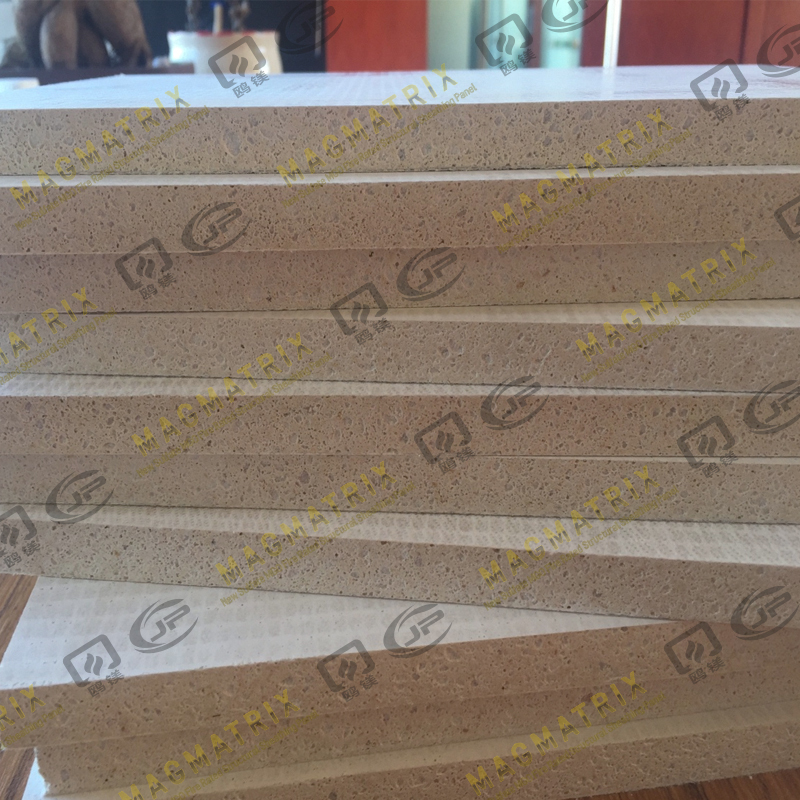 BMSC 517 New Sulfate MgO Board
BMSC 517 New Sulfate MgO Board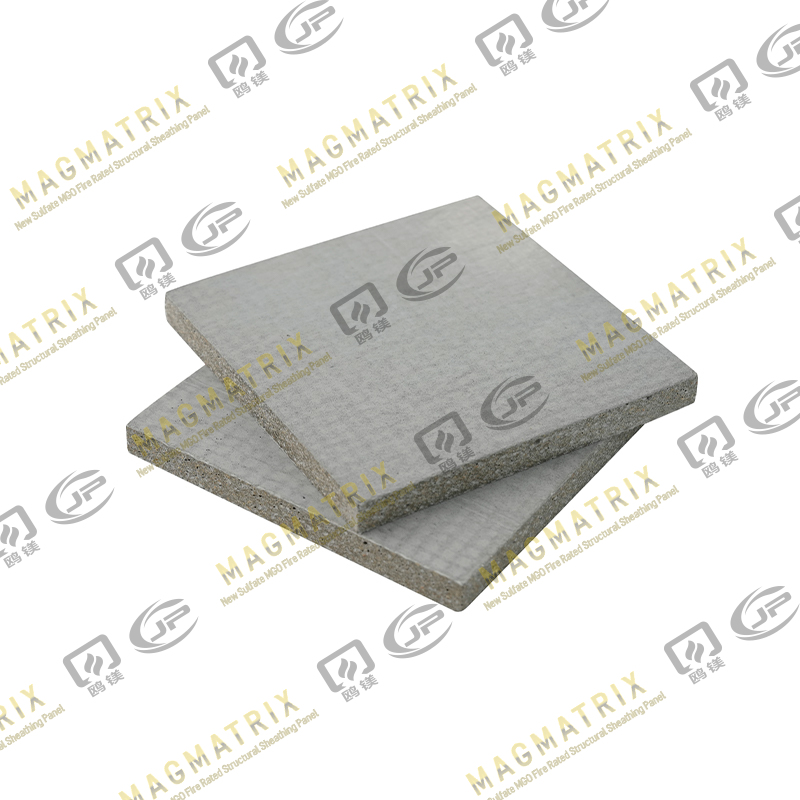 Multi-Support MgO Wall Sheathing Board
Multi-Support MgO Wall Sheathing Board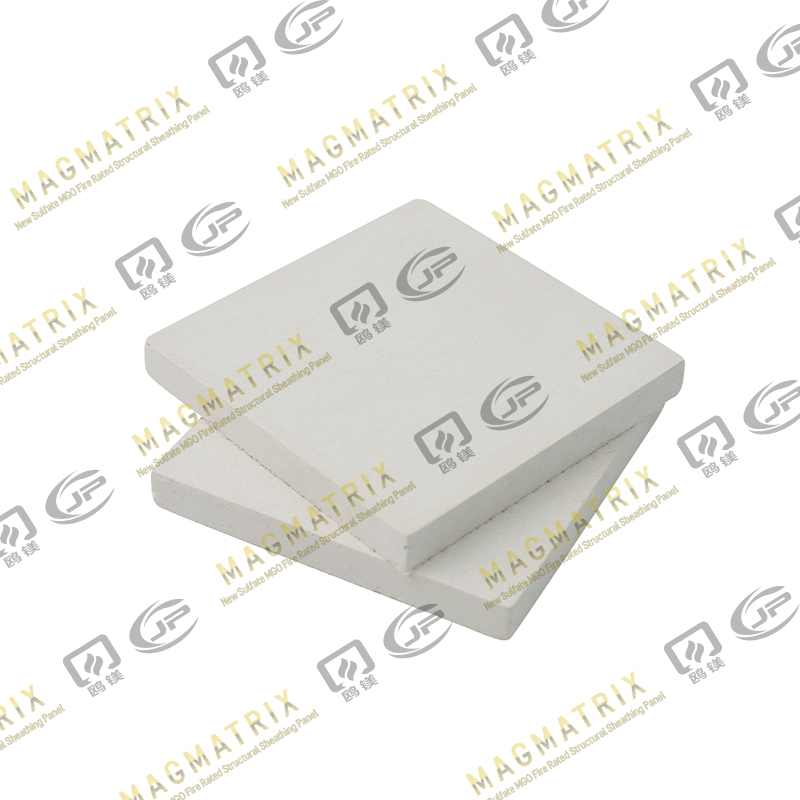 Perseverance MgO Wall Sheathing Board
Perseverance MgO Wall Sheathing Board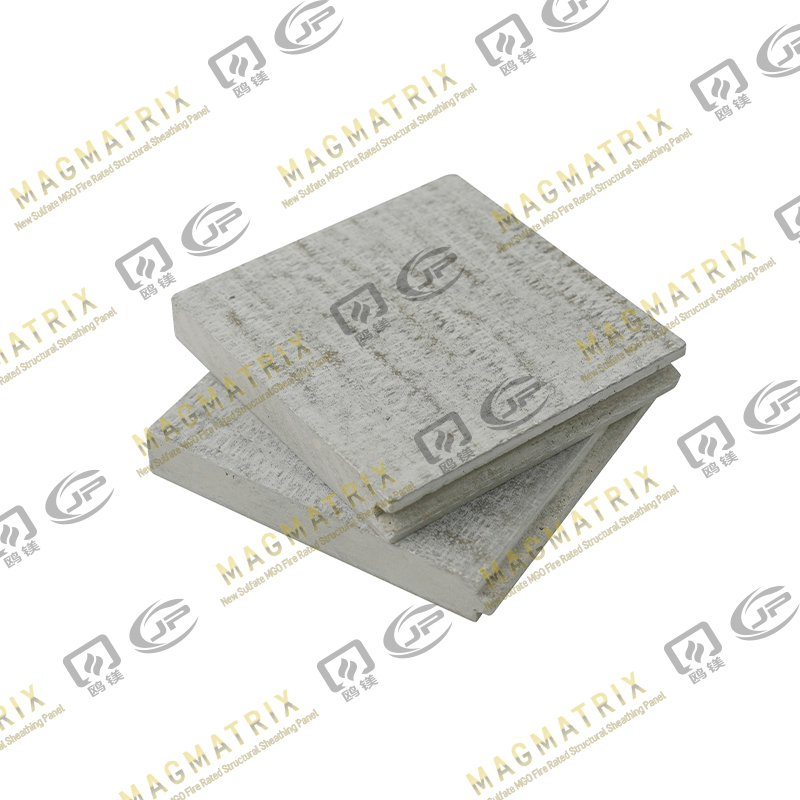 Multi-Support MgO Subfloor Sheathing Board
Multi-Support MgO Subfloor Sheathing Board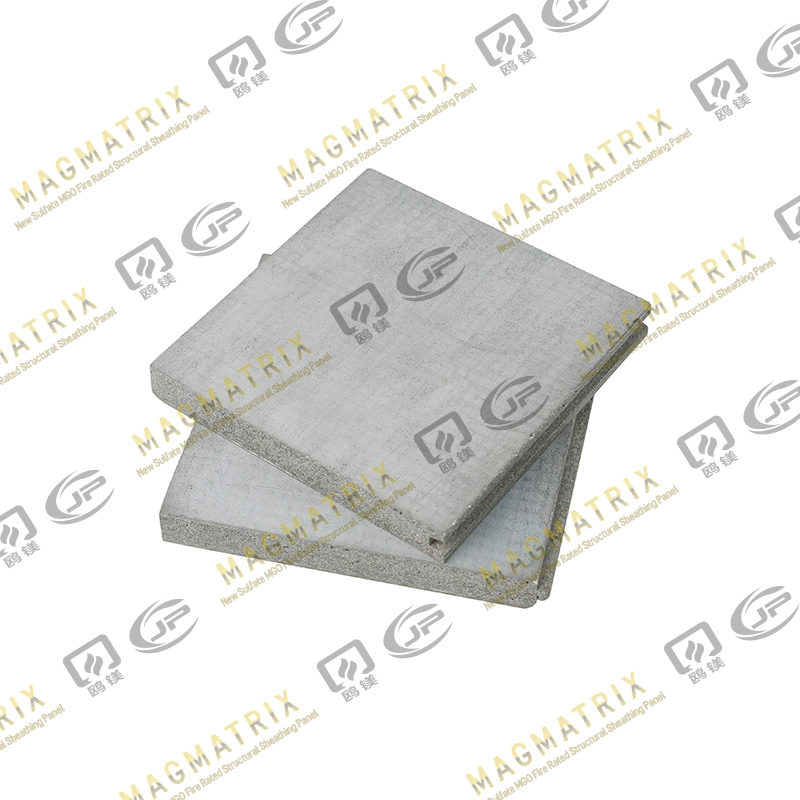 Perseverance MgO Subfloor Sheathing Board
Perseverance MgO Subfloor Sheathing Board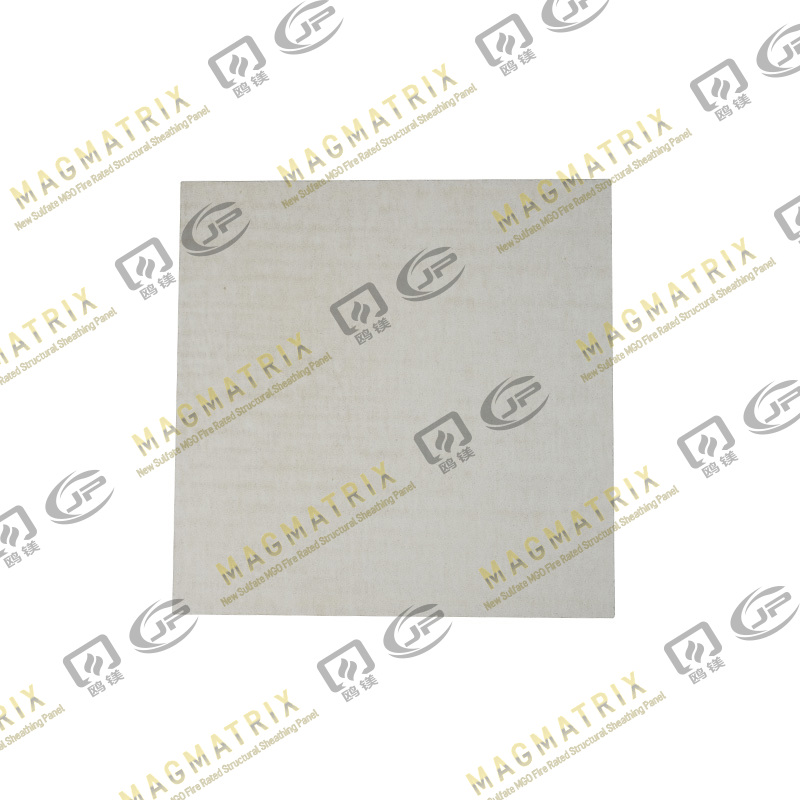 MagMatrix MgO Underlayment Panel/board
MagMatrix MgO Underlayment Panel/board


 English
English русский
русский Español
Español
